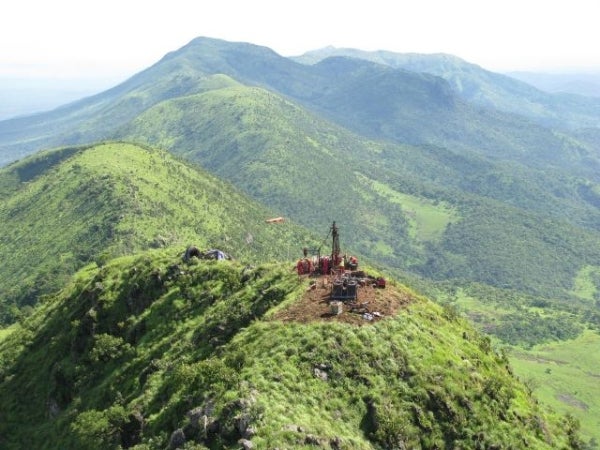

Exploration might be the bedrock of the mining industry, but finding a promising deposit is only the beginning of the story. The economics of a mine development project are dependent on far more than the richness of the resources discovered, and even the most lucrative projects can be derailed without proper infrastructure and effective access to regional and global markets.
For the most part, dedicated freight railways are the transport mode of choice for major mining projects, bringing with them much greater freight capacities and more direct routes than road networks, as well as exclusive access for a steady and predictable supply to nearby ports. Local transport infrastructure is a relatively common stumbling block for mines, as inadequate links can put a bottleneck on production and leave projects unable to meet their potential.
As a result, new rail links for mining projects are often hailed as a revitalising force for resource-rich regions that need to upgrade transport infrastructure before existing operations can expand and new mines can be developed. Large-scale new projects, meanwhile, build new railways and other transport considerations into their earliest planning stages. Here, we highlight five mining railway projects of particular significance to their corresponding projects, and the regions beyond.
Northern Rail Line, Mongolia
Mongolia’s resource potential has sprung to life in the last few years, partly as a result of the Mongolian Government’s increasingly permissive attitude to mine development and foreign investment, but mostly due to the country’s massive natural deposits of gold, copper and, perhaps most importantly, coking coal. The country is already the largest single source of Chinese coking coal imports, and Australian developer Aspire Mining is hoping to tap even more of Mongolia’s coal reserves with its Ovoot Coking Coal Project.
Aspire has so far explored only 30% of the 509km² Ovoot Basin, but its total coal reserves have been estimated at 281 million tonnes of high-grade coking coal, making it one of the highest value deposits in Mongolia, second only to the massive government-owned Tavan Tolgoi project. As the company continues its commercialisation phase, it has established Northern Railways LLC as a special purpose vehicle to build and operate the 547km, $1.3bn Northern Rail Line.

US Tariffs are shifting - will you react or anticipate?
Don’t let policy changes catch you off guard. Stay proactive with real-time data and expert analysis.
By GlobalDataThe line will carry coal from Ovoot (which has an initial planned production of 5Mtpa) to Erdenet for export to world markets, including China, India, Japan and Russia. Having already been altered slightly, the alignment of the link has been put under the microscope by engineering consultant SMEC International, which confirmed that the line is viable from an operational and engineering perspective, and is likely to reduce the company’s capital costs. SMEC’s analysis also identified plenty of quarries on the route to provide ballast for the track, and found that the risk of permafrost, while still present, is likely to be "not as significant an issue as anticipated and budgeted for".
Nacala Rail Corridor Project, Mozambique
Brazilian mining giant Vale’s coal mining operation in Mozambique’s Tete province is already up and running, but its reliance on the struggling and unreliable Linha do Sena railway for transportation to the port of Beira has been a thorn in its side.
In February 2013, for example, the company had to declare force majeure on its coal production in the area because the line had been rendered useless by heavy rainfall, causing the loss of at least 250,000 tonnes of coal shipments. The company has even postponed mining expansion plans in the region because of poor infrastructure.
Vale hopes to remedy the situation with the $4.5bn Nacala Rail Corridor Project, a new 912km railway line that will link the company’s Moatize mine in Tete province with the alternative port of Nacala, where a new coal terminal is being developed under the same project.
The development of the corridor, which passes through neighbouring Malawi on its route to Nacala, is now in full swing, with two construction contracts awarded to Portuguese firm Somague in March 2013 and work on the Malawi section kicking off in summer 2012. Initial operations on the link are tentatively set for 2014.
Central Queensland Integrated Rail Project, Australia
The Galilee Basin, 200km west of existing coal facilities in Queensland’s Bowen Basin, is Australia’s newest coal hotspot. The 250,000km² area hides enormous deposits of thermal coal – GVK Hancock, one of the major developers in the area, believes its Alpha Coal project could produce a massive output 30Mtpa, and other mines in development could exceed it. The five major mines currently proposed for the basin could have combined production of up to 200Mtpa.
But to make the most of this new frontier – as well as accommodate the expansion of existing operations in the Bowen Basin – transport and export infrastructure needs to be upgraded in a big way. Australian rail freight company Aurizon struck a deal with GVK in March 2013 to invest around A$6bn to build a 495km link between the Galilee Basin and the Abbot Point coal export terminal just north of Bowen. The line is due to begin operations in 2016.
"This is one of the most significant deals in Queensland’s coal history," said GVK chairman Dr G V Krishna Reddy. "The development of the rail and port infrastructure will unlock the Galilee Basin and see the development of Alpha, Kevin’s Corner and Alpha West, creating one of the largest integrated coal development projects globally."
The project still has public relations challenges to overcome, however. Anti-coal activists made their voices heard at Aurizon’s annual general meeting earlier in November, objecting to the project on environmental grounds and even making veiled threats of direct action against its infrastructure.
Simandou Railway, Guinea
The forested foothills of Simandou in the West African state of Guinea contain huge deposits of iron ore, making it one of the continent’s most lucrative resource development regions. While Rio Tinto was forced in 2008 to cede the northern portion of the licence area to BSG Resources (which is now mired in a bribery scandal that threatens its whole Simandou operation with partner Vale), the company retains the southern half, and the iron ore mining project being developed there will have an estimated output of 95Mtpa when at full production.
Rio’s integrated vision for the project includes the development of a new marine offloading facility in the Forécariah prefecture 70km to the south of Guinean capital Conakry, as well as a 670km heavy-haul railway to link the mine and port. The single-track line will incorporate 13 passing loops to allow trains to move past one another, while three tunnels, 34 river bridges and nine road bridges will take the track through Guinea’s rugged countryside, including the densely forested Mamou mountain range.
It’s an ambitious project that befits Simandou’s status as one of the world’s largest unexploited iron ore deposits, but while Rio hasn’t been beset by the deep-seated issues that plague its rivals to the north, there have been a few bumps in the road. The company, along with its partners the World Bank and Aluminium Corporation of China (Chalco), recently pushed back the start of production at the site from 2015 to 2018.
The rail link is reportedly the main reason for the delay, as the project partners have struggled to confirm the funding of the expensive line with the Guinean Government. The government is also unwilling to consider a cheaper rail link to a port in neighbouring Liberia, as it wants its own people to enjoy the economic benefits of the new line.
Carajás railway expansion, Brazil
Vale is expanding operations at its massive Carajás iron ore complex in the Brazilian state of Pará; its S11D project, the largest in the company’s history, received environmental approval from the Brazilian Government in July 2013. The project is due to start production in 2016 and will reach its peak output in 2018, when it is scheduled to reach 90Mtpa, increasing the complex’s total production by nearly a third.
The 892km Carajás Railway (EFC), which ferries iron ore from the Carajás mines through the Amazon to the Ponta da Madeira Sea Terminal in Maranhão state, is being expanded to accommodate the extra production. As well as acquiring new locomotives and rail cars, the expansion involves adding 115km of track to the line and double-tracking key sections, so trains can pass each other without the need for passing loops.
The first phase of the EFC expansion was completed in summer 2013, with 63km of track now duplicated. However, expanding a railway that runs through an environmentally and culturally sensitive area is no easy task; the integrated mining expansion has previously been held up in court because of environmental concerns, and indigenous activist groups have sporadically blockaded the EFC to protest the project or seek improved public services.
Related content
Rehabilitating old mining sites
New Zealand coal mining company Solid Energy has developed a new method of using biosolids to rehabilitate old mining sites.
Countries with the biggest coal reserves
More than 80% of the world’s total proved coal reserves are located in just 10 countries.


.gif)

